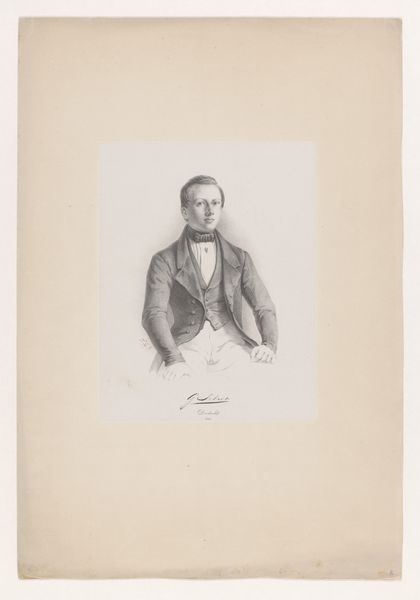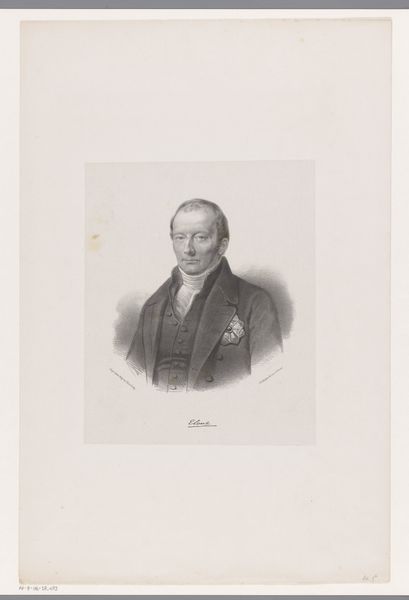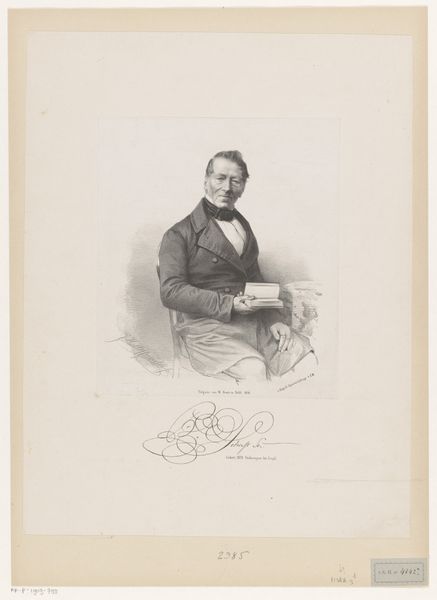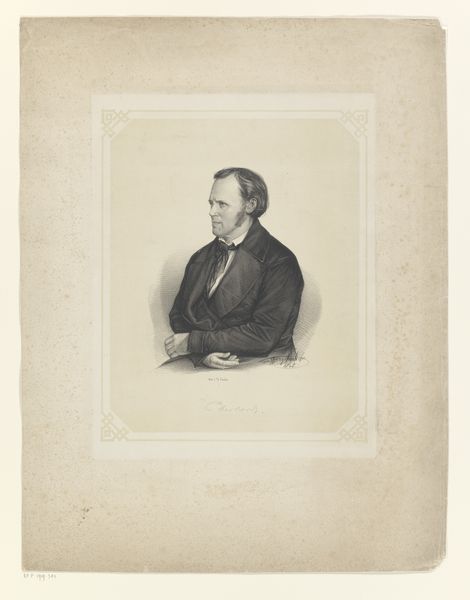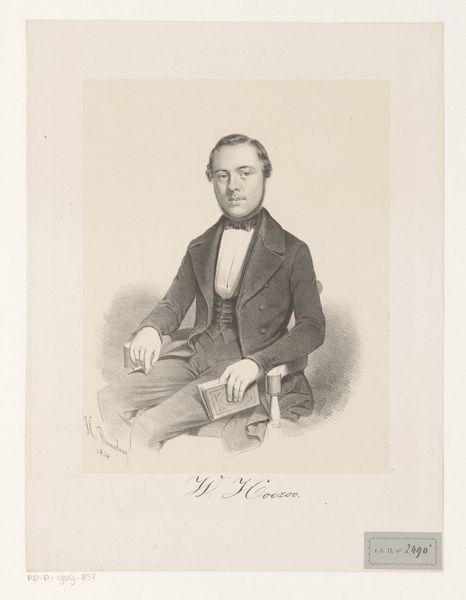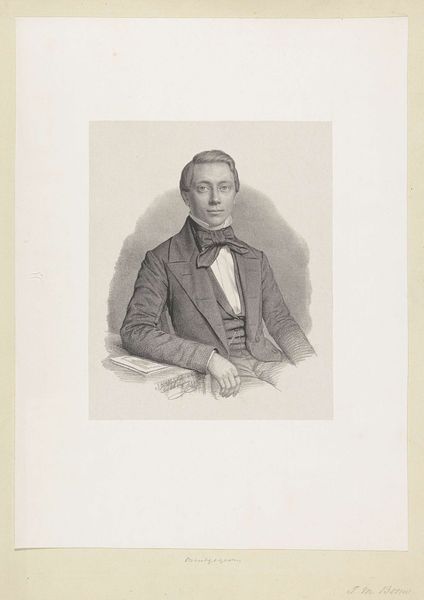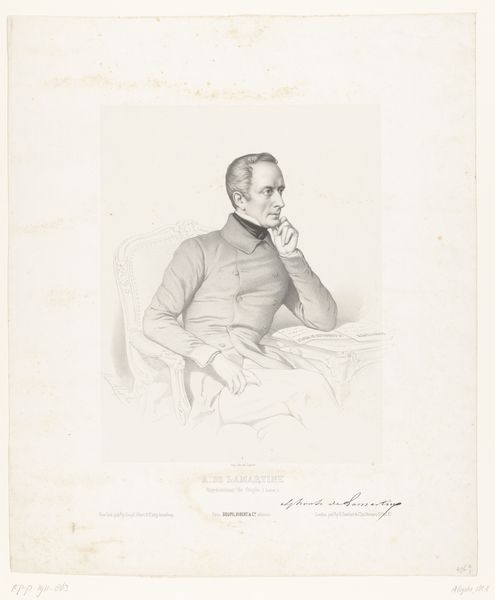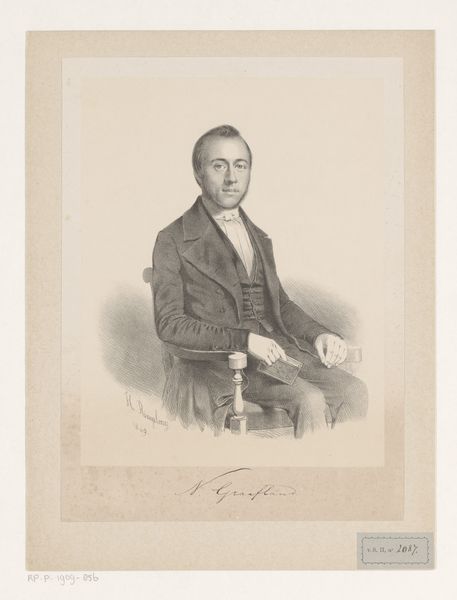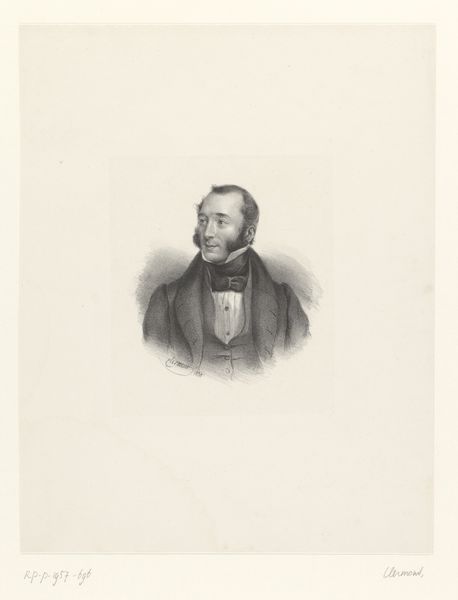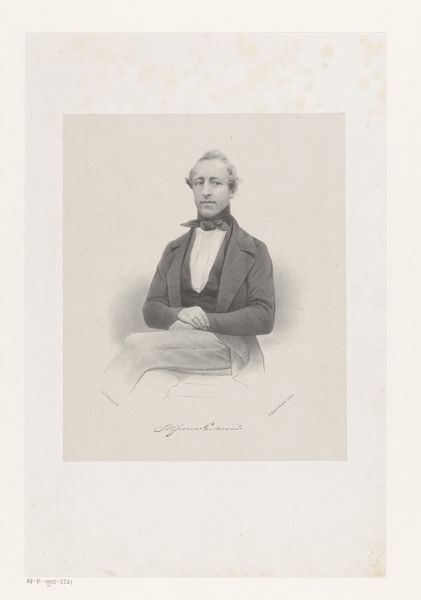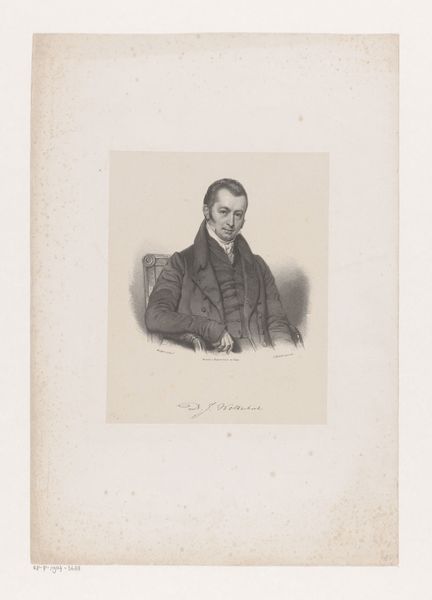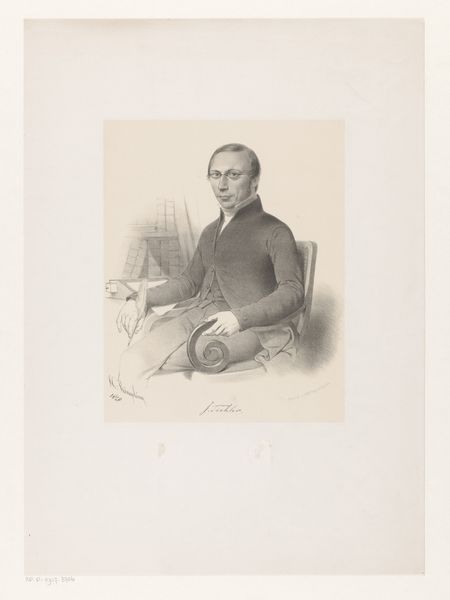
drawing
#
portrait
#
drawing
#
portrait drawing
#
academic-art
#
realism
Dimensions: height 640 mm, width 453 mm
Copyright: Rijks Museum: Open Domain
Joseph Schubert’s undated portrait of Lambert de Grandvoir is a lithograph, a printmaking technique that democratized image production in the 19th century. Lithography relies on the chemical repulsion of oil and water. The artist draws on a stone or metal plate with a greasy crayon, then treats the surface so that ink adheres only to the drawn areas. This print shows us the kind of tonal range that can be achieved through this technique. But more importantly, the lithograph’s inherent reproducibility speaks to wider social issues of labor, politics, and consumption. Consider the amount of work involved in the production process: from quarrying the lithographic stone to the skilled hand of the artist, and then multiplied across however many impressions were pulled. The portrait immortalizes the sitter, but also serves as a record of industrial advancement, achieved through hard work and ingenuity. It reminds us that the value of art lies not only in its aesthetic qualities, but also in the labour and social context embedded within its production.
Comments
No comments
Be the first to comment and join the conversation on the ultimate creative platform.

